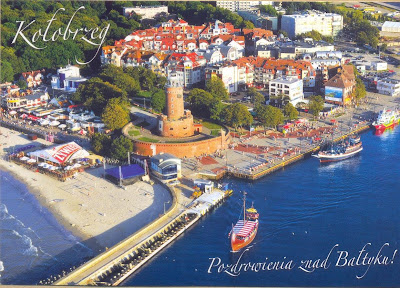Kołobrzeg is a city in the West Pomeranian Voivodeship in northwestern Poland with some 50,000 inhabitants (as of 2000). Kołobrzeg is located on the Parsęta River on the south coast of the Baltic Sea (in the middle of the section divided by the Oder and Vistula Rivers). It has been the capital of Kołobrzeg County in West Pomeranian Voivodship since 1999, and previously was in Koszalin Voivodship (1950–1998).
During the Early Middle Ages, Slavic Pomeranians founded a settlement at the site of modern Budzistowo. Thietmar of Merseburg first mentioned the site as Salsa Cholbergiensis. Around the year 1000, when the area was under Polish rule, the stronghold became seat of the Diocese of Kołobrzeg. During High Middle Ages, the town was expanded with additional settlement was founded a few kilometers north of the stronghold in the course of the Ostsiedlung and chartered with Lübeck law. The city later joined the Hanseatic League. Within the Duchy of Pomerania, Kolberg was the urban center of the secular reign of the Cammin bishops and their residence throughout the High and Late Middle Ages. When Kolberg was part of Brandenburgian Pomerania during the Early Modern Age, it withstood Polish and Napoleon's troops in the Siege of Kolberg. From 1815, it was part of the Prussian province of Pomerania. During the 19th century a Polish community started to organize itself. As the Nazis took power in Germany, Poles and Jews were discriminated, determined to be subhuman and eventually subjected to genocide. In 1945 Polish and Soviet troops seized the town and it was subsequently attached to Poland, while the remaining German population, which had not fled the advancing Red Army was expelled. The town, devastated in the preceding Battle of Kolberg, was rebuilt but lost its status as the regional center to the nearby Koszalin. This lovely card was sent to me by Krystyna.
